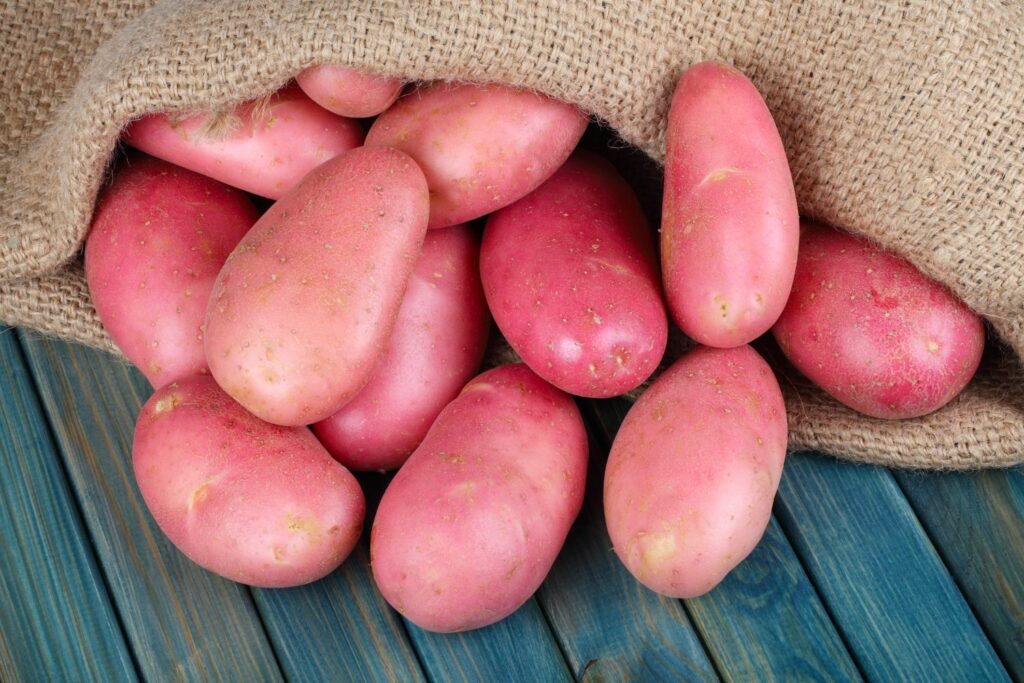In a world where sustainability and environmental consciousness are paramount, it is important to showcase agricultural practices aligned with these values. The humble red potato, which is often overlooked and replaced by more famous varieties, offers a tasty culinary experience as well as exemplifying sustainability in agricultural practices. In this post, we will examine why red potatoes are an environmentally friendly and sustainable crop.
Efficient Land use
Red potatoes have a high level of sustainability due to their efficient land use. Red potatoes grow well in small areas. This compact growth pattern allows for more potatoes to be grown in less space, saving valuable agricultural resources.
Enhancing Soil Health
Red potatoes contribute in different ways to soil health. Their roots improve soil quality by promoting air circulation and reducing compaction. The practice of crop rotation often includes potatoes. This diversifies the types of plants on a given field and helps mitigate soil depletion. The red potatoes also need less synthetic fertilizers and pesticides. This helps reduce the environmental impact associated with agriculture.
Reduced Water Requirements
Water scarcity, a pressing issue worldwide, is being addressed by agriculture. Red potatoes require less water compared with other staples, such as rice and wheat. Because of their moderate water requirements, they are a viable choice in regions that face water stress. This encourages sustainable water-management practices in agriculture.
Biodiversity support and Ecosystems
Red potatoes provide food and habitat to a wide range of organisms. Potatoes attract beneficial insects to help reduce pesticide use by naturally controlling pests. Certain potato types can help create pollinator landscapes to encourage bees.
Climate Change Resistance
Climate change represents a significant risk to global agriculture. Because they can adapt to many climates, the red potato is more resilient when it comes to changing weather patterns. Their ability to thrive in diverse environments makes them a valuable grain in regions where climate variability is a growing concern.
Reduce Food Waste
Food waste is a problem that exists worldwide. It occurs primarily at farms when imperfect produce does not meet aesthetic standards. Red potatoes have a variety of shapes and are less likely than other types to be rejected for cosmetic reasons. In recent years, consumers have begun to accept “ugly” products, and by doing so, they are helping reduce food waste.
The Minimum Processing Requirements
Red potatoes typically require less processing compared to other crops. Typically, they are harvested and then sold directly to consumers. Packaging is minimal, which reduces environmental impact. This simplifies supply chains, reducing emissions and energy consumption.
Improved Nutrient Density
Red potatoes have a high nutritional value. Red potatoes contain a lot of vitamins, minerals, and fiber. It’s not only healthy to eat red potatoes, but it promotes sustainability by reducing your need for other less nutrient-dense and resource-intensive food options.
Conclusion
Red potatoes, overshadowed often by their famous counterparts deserve recognition for their contributions towards sustainable agriculture. Their soil-enhancing abilities, low water demands, and ability to adapt to climate changes make them a perfect crop for a planet facing environmental challenges.
The red potato’s high nutrient and biodiversity content, minimal processing, and support of biodiversity are all factors that contribute to its sustainability in the supply chain, from the farm to the table. With the changing agricultural and consumer practices, it’s crucial to encourage and value crops like red potato that embody environmental stewardship and sustainability. By supporting sustainable agriculture by purchasing red potatoes, we can create a more resilient food system and a more eco-friendly one for future generations.

